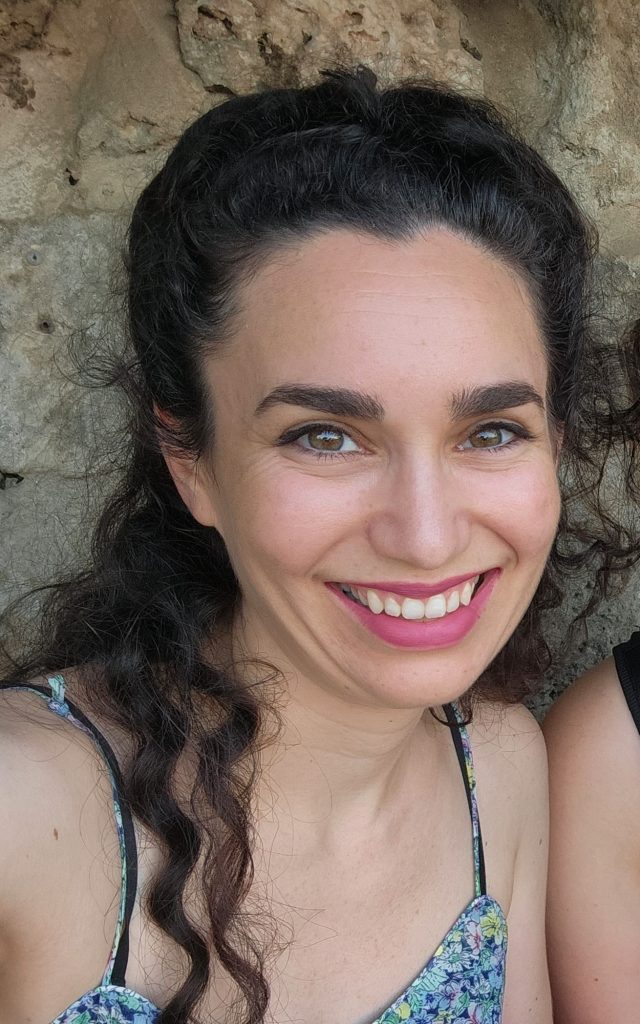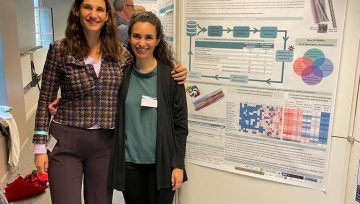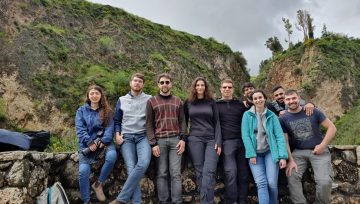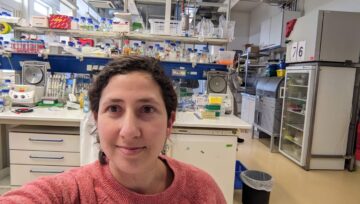SPOTLIGHT ON RESEARCH
PAPER OF THE MONTH November 2023
The paper was accepted for publication in “PROTEINS: Structure, Function, and Bioinformatics”
On the occasion of the win, we asked Peleg to provide us with some interesting details about the study, the path that led to the research, and a bit about her.
Hi, could you introduce yourself in a few words?
I was born and raised in Kochav Yair, and I have been living for the past 8 years in Haifa with my beloved family, my husband Oren who is also a PhD student in the biotechnology and food engineering faculty in the Technion, our son Erez and Jessy the dog. I studied for my bachelor’s degree in computer science focusing on bioinformatics at the Technion, fell in love with the field, and immediately started my Master’s and continued to PhD at the Landau lab at the faculty of Biology.
Could you tell us about your current article/research what was the main purpose of the research and what did you discover?
The overarching goal of our lab is to study amyloid proteins and understand the relationship between their structure and function. It is important to mention that the structure determination of proteins of any type is important and has a tremendous effect on our understanding of the protein’s function and can be the starting point for medical and biotechnological applications.
Specifically in our lab, we are interested in amyloid proteins that are involved in numerous human pathological and infectious diseases. In the current research project, we tried to evaluate the performance of the AlphaFold algorithm for predicting amyloid structures. Amyloid structures are different and more complex than most of the proteins, therefore it is very difficult to determine their structure experimentally and computationally. The AlphaFold algorithm is the most recent and most accurate tool that exists for predicting protein structures and we aimed to evaluate its ability to predict amyloid structures. Surprisingly, we discovered that the AlphaFold algorithm predicts structures resemble unique amyloid structures we discovered in our lab, rather than the canonical common amyloid structures. It is important to mention that they are not identical to the experimentally determined structures, but they apply the same principles
Can you elaborate on the importance of the discovery? How will it serve you and what directions does it take? What is the application of the discovery (domains, solutions)? The discovery can imply the functional role of the unique structure we determined in our lab since the AlphFold algorithm is based on thousands of structures and prefers them over the canonical and most common amyloid structures. But, we cannot rely on this tool only since its predictions are not accurate enough for our data. Therefore, in the future and as continued research, we are developing new tools that will allow us to study amyloid proteins. On the one hand by amyloid structure prediction and on the other by identification and classification between different amyloid types.
When you are not “doing” science, what do you do? In my free time, I am focused on my family, first and foremost my son and husband, and spend a lot of time with my extended family traveling in nature and doing special experiences.
➡ A link to the full article: https://onlinelibrary.wiley.com/doi/10.1002/prot.26618
➡ A link to Prof. Landau lab site: https://mlandau.net.technion.ac.il/
➡ A link to Prof. Landau Page: https://biology.technion.ac.il/en/member/landau/











